Lesbía verður til: félagið Íslensk-lesbíska og skörun kynhneigðar og kyngervis í réttindabaráttu á níunda áratug 20. aldar.
Ártal:
Bls:
DOI:
Efnisorð:
20. öldin er sá tími sem samkynhneigðir voru á Vesturlöndum mótaðir sem þjóðfélagshópur með ákveðin persónueinkenni. Aukin þéttbýlismyndun veitti þeim skjól til að byggja upp neðanjarðarmenningu sem lagði grunninn að frelsishreyfingu homma og lesbía á sjöunda og áttunda áratugnum. Réttindabarátta samkynhneigðra var þó miklu seinna á ferðinni hérlendis enda mynduðust margar af forsendum samkynhneigðrar sjálfveru mun síðar á Íslandi en í nágrannalöndunum. Þetta á sérstaklega við um konur því svo virðist sem samkynhneigð rými á Íslandi hafi á fyrri hluta 20. aldar eingöngu verið ætluð körlum. Fyrstu vísbendingar um að lesbíur hafi í einhverjum mæli farið að hópa sig saman eru frá því um 1970 en allt fram á níunda áratug 20. aldar stóðu þær að mestu utan við ríkjandi orðræðu. Árið 1985 stofnuðu nokkrar lesbíur félagið Íslensk-lesbíska sem var m.a. ætlað að vera vettvangur fyrir lesbískt málefnastarf. Félagið leigði húsnæði í kvennahúsinu í Vallarstræti 4, m.a. í þeim tilgangi að brúa bilið milli kvennahreyfingarinnar og réttindabaráttu samkynhneigðra og skapa vettvang fyrir starf sem byggðist á samþættingu kyngervis og kynhneigðar. Hvernig var þessu nýnæmi tekið innan kvennahreyfingarinnar og Samtakanna ’78? Hvaða áskoranir fylgdu því? og hvernig tókst félaginu að fóta sig í samfélagi þar sem lesbíur voru að verða til sem þjóðfélagshópur? Í þessari grein verður fjallað um sögu Íslensk-lesbíska og hún notuð til að varpa ljósi á aðstæður íslenskra lesbía, mótun lesbískrar sjálfsveru og möguleika fyrir samþættan lesbískan femínisma á blómaskeiði kvennahreyfingarinnar um miðjan níunda áratuginn.
The Icelandic Lesbian Association: The Intersectionality of Gender and Sexual Orientation in 1980s Rights Movements
In the West, the twentieth century was a time when homosexuals were constructed as a social group and ascribed particular traits. This development can partly be traced to modern urbanisation which provided shelter for an underground platform necessary for the creation of the gay liberation movement of the 60s and 70s. In sparsely populated Iceland, however, homosexual communities emerged much later than among the urbanised, modernised societies of neighbouring countries. Here, the first indications of lesbian social spaces appeared around 1970, and even in the 1980s these remained largely ignored by the dominant discourse.
In 1985, however, several lesbians founded the Icelandic Lesbian Association (Íslensk-lesbíska), partly as a platform for lesbian issues. With an eye both to bridging the gap between the women’s and homosexual rights movements of the time and to fostering activities based on the integration of gender and sexual orientation, the Association rented a space in the so-called Women’s House (Kvennahúsið) in downtown Reykjavík. This article analyses the Association’s undertakings within the framework of the history of sexuality, deploying theories of subjectivity and intersectionality in order to clarify the social conditions of Icelandic lesbians, the formation of a lesbian subjectivity, and the potential for an integrated lesbian feminism during those years of the 1980s when lesbians were beginning to form a social group in this country.
The article concludes that the Icelandic Lesbian Association became an important forum for the shaping of the lesbian subject within an Icelandic context, as well as for the agency which was instrumental in its construction. No other forum existed for activism based on the intersectionality of gender and sexual orientation, because the leading association of Icelandic homosexuals, Samtökin ‘78, was unprepared for this kind of integration while struggling with the HIV epidemic. As for the women’s rights movement, its ideology, which was based on the idea of the mutuality of women’s experiences, marginalised lesbians by considering their issues as unique to them and therefore outside the movement’s field of interest. The upshot is that even today, thirty years later, the Icelandic Lesbian Association is the only organisation in the history of the Icelandic women’s and queer rights movements which has based its activism on the intersectionality of gender and sexual orientation.

